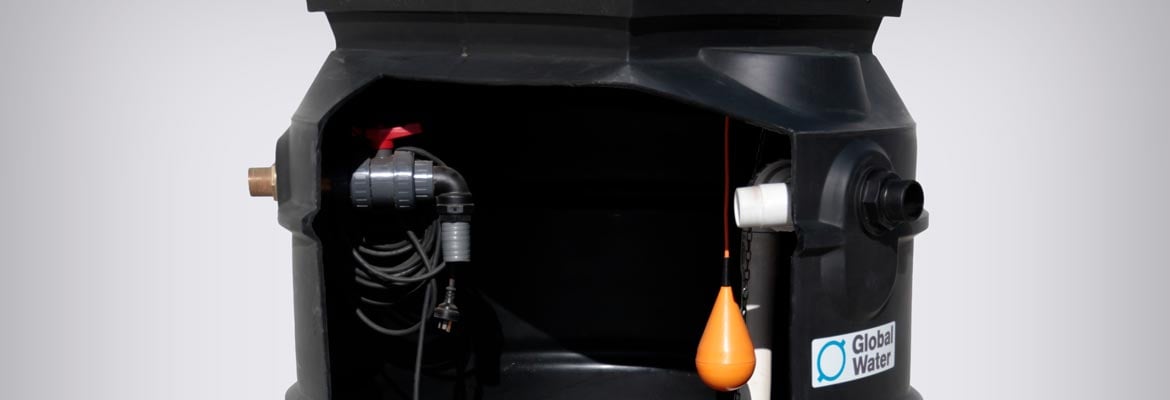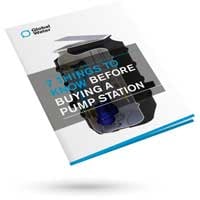So, you’ve recently installed a pump station and may be worrying about what happens if the station fails. We have outlined the top 5 common reasons it may fail and how to prevent it.

Firstly, lets identify what a pump station is. Pump stations are holding chambers that collect water run off where gravity fall cannot be achieved to the storm water or sewage pipe network) The chamber has one or two pumps to then discharge the liquid to a required location. Pump stations are designed for residential, commercial, and industrial applications and are a perfect option for storm water and sewage systems. The stations can also be used as storage tanks either above or below ground and can be buried at various depths, which makes them extremely versatile.
The common problems:
- Build-up of grease in trade waste stations
A build-up of grease is a cause for a failing pump station. Pump blockage is the most common cause of pump failure as it obstructs float switches which affects the control system of the pump and can cause backup and overflow. These blockages occur due to the system not being maintained or has not been designed correctly for the application. Chemical dosing systems and grease traps can be installed to reduce build-up and odours, and concrete pump stations are made with calcareous aggregate so protective materials are very rarely needed.
To learn more about treating trade waste, read more here.
- High level alarm activates
A high-level alarm is a standard feature in any pump station, which can be incorporated with a pump controller. This alarm activates when liquid meets a certain level in the chamber.
If your high-level alarm is going off, you must firstly determine whether the alarm is a hydraulic issue or a sensor issue. To do this, open the pump chamber and inspect the liquid level.
Common causes of the alarm ringing are:
- Pump blockage – large debris or foreign material stuck inside the strainer or impeller
- Air locks in the actual pump or discharge pump.
- Float switches
- Not set correctly/wrong height
- Installed too close together and they get tangled
- Sensor Faults
If the alarm is sending a false signal then you must identify the cause of the signal. Some common causes are:
- The high-level float is tangled on the pump lifting chains
- Untangle the float to stop the alarm
- The ball bearing may be stuck inside the float
- Shake the float itself to loosen the ball bearing
- The level sensors are wired incorrectly at commissioning
- Double check the wiring by lifting each float to identify what activates in your pump station (please note that many are dry running, so ensure there is sufficient water in the pump)
- If the highest float engages the pump and the lowest sounds the alarm, then the floats have been wired back to front. Either switch the position of the floats in the chamber or swap the float terminal connections in the controller to solve this.
- The float switch is faulty
- Try disconnecting the float from the controller, and if this doesn’t stop the alarm, fit a new switch to the controller
- Hydraulic faults
Other common causes of pump station failure are:
Water ingress
Occasionally water proofing fails which causes water to enter the electrical system. This is mostly caused by general wear and tear. It is recommended the pump is replaced as it is more cost efficient than constantly getting it repaired.
Non-return valve failure
In a dual pump system re-circulation occurs when a non-return valve is jammed open in the discharge pipework of the standby pump. This causes the pump to cycle continuously until failure
Loose impeller
If a pump is constantly running and the liquid level is not reducing, then it is likely the impeller bolt is loose. Re-tighten the bolt (access it from the bottom of the submersible pump) to rectify the issue.
Air ingress
Submersible pumps are generally not designed to run dry, so if the pump has drained the liquid too low, air will enter which will create an air pocket that’s difficult to clear. Not only will this interfere with the liquid being pumped, but it can cause blockages through air lock to damage the pump. A small hole can be drilled in the discharge pipe just below the check valve to fix this
- Infrequent servicing
It is recommended that regular servicing for pump stations is completed to keep pump stations in optimal condition. Most pump station failures occur from infrequent maintenance and regular inspections, so it is crucial any problems are acted upon immediately to avoid catastrophic pump failure.
Want to learn more?
Is your concern not listed? Are you wanting to know more about pump stations? If this sounds like you, get in touch with Global Water today. Our team of experts can advise you on best practice and answer any further questions.
Tags: Troubleshooting, Pumpstations




